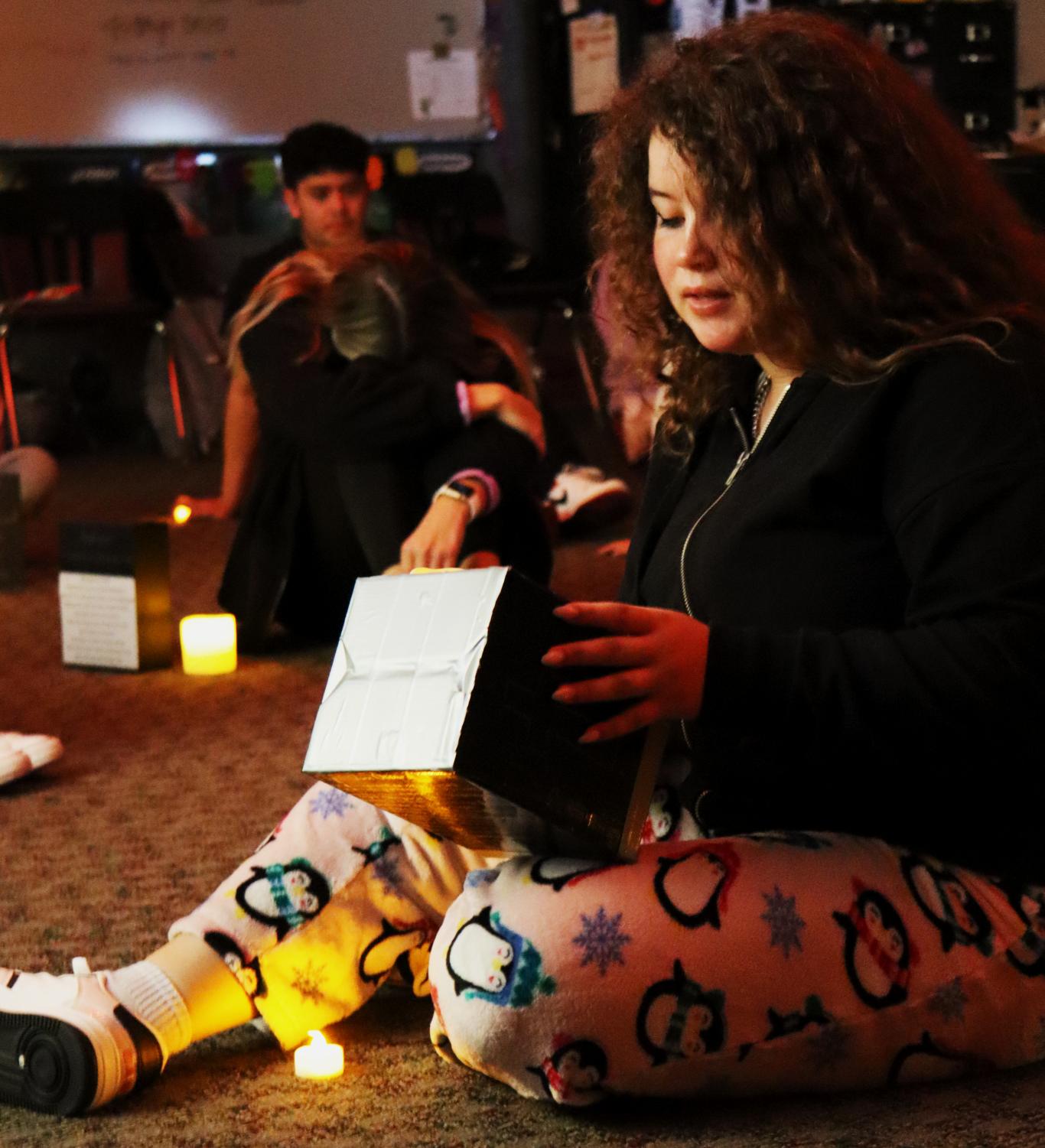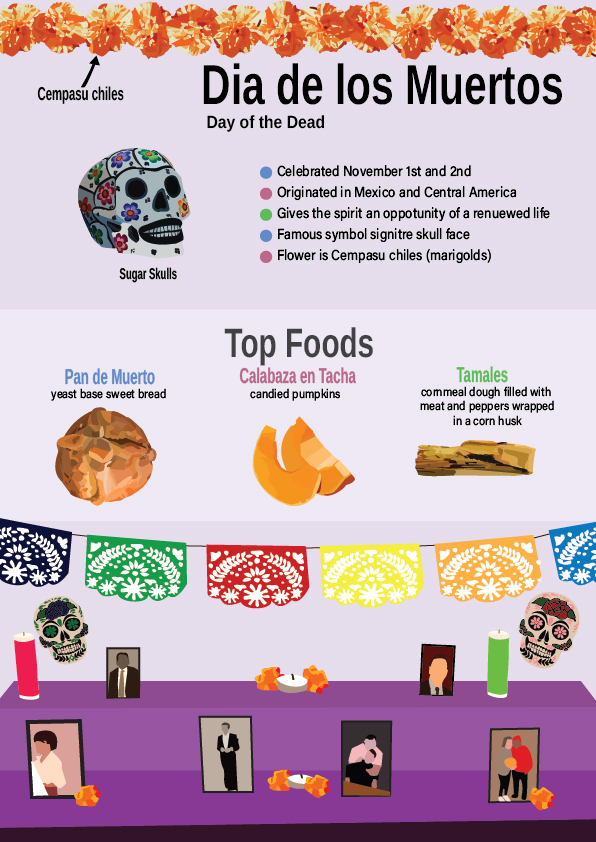District high school students celebrate centuries-old tradition
Students create projects based on Dia de los Muertos
November 8, 2022
A centuries-old holiday with rich history and deep-rooted traditions is now being incorporated into the academic lives of students at both USD 266 high schools.
This holiday is Dia de los Muertos, meaning “Day of the Dead.” It is a celebration of remembrance for lost family and friends.The story goes that during the time of year the veil between living and dead is the thinnest and spirits are able to visit their loved ones.
Skylar Seals, a sophomore at Maize South, worked on “tombstones for famous hispanics who have passed away and what they have accomplished in their life” in Rachel Delzer’s Spanish 3 class.

Seals had chosen Selena Quintanilla as the focus of her project.
“She was a singer who was killed at the age of 23 by the president of her fan club,” Seals said. “She become popular very fast because she spoke English but her dad taught her Spanish to resonate with the Latina community.”
After completing their tombstones, the students presented them to the class in candlelight like they would in Mexico.
Some students described the most unexpected aspects of Dia de los Muertos. Braelyn Delzer, a sophomore at Maize South, says for her, it was that “they slept in the graveyard” during the holiday. Kamryn Nash, a junior at Maize South, mentioned how “they took a whole month to prepare” for Dia de los Muertos.
As Dia de los Muertos becomes more popular in America, it can come with unexpected misconceptions, especially being so close to Halloween. Although the holidays may have some similarities, for example, belief in spirits visiting the living world, they don’t celebrate the same ideas.
One aspect of Dia de los Muertos is Calaveras, or “sugar skulls”, are decorative pieces made from wood, sugar paste, paper maché, and many other things
“[T]here are costumes; but not like we think of it in the United States, so you will see Calaveras,” Maize High Spanish teacher Ashley De la Torre said. “I think the biggest misconception is that [Dia de los Muertos] is a spooky holiday, or that Mexican people are worshiping spirits or things like that.”
While Dia de los Muertos is a holiday on its own, it has some inspiration from other cultures and religions.
Dia de los Muertos is an accumulation of some other, older traditions, as most modern holidays are. She teaches her class that these days of remembrance have beliefs descending from “indigenous celebrations along with Catholic influence, and it’s also observed around All Saint’s Day.”
De la Torre’s class learned first hand about the traditions of Dia de los Muertos by building ofrendas in class.

“Families,” as De la Torre explains, “will normally build an altar, which is called an ofrenda [meaning “offering” in English] honoring their loved ones that have passed.”
Often the ofrenda is decorated with favorite foods and drinks, pictures of their family and more. This is so the spirits can “enjoy all of their favorite things that were left on the altar for them,” adds De la Torre.
It is also a tradition in Mexico to decorate with marigolds, which are believed to be the flowers of the dead. They are ruffled flowers with a bright yellow, almost gold hue.
Maize High art teacher Marie Taylor, who also commemorated Dia de los Muertos with her classes, says “[marigolds] have a smell that welcome the deceased family members back.”
Students in Taylor’s class are studying about Dia de los Muertos and the many impactful contributions art has on the holiday. Currently they’re working on their own sculptures, creating calaveras with recycled mediums like paper, styrofoam, and cardboard.
Luckily for Wichita there is a renowned print by Posada, a famous Mexican print artist, that is currently being held in the Wichita Art Museum and will be displayed in the Wichita Art Museum until December. Posada was inspired by Dia de los Muertos and published his work in the newspaper. Taylor had taken the Maize High art club on a field trip to see the print in person.
“It’s kind of a big deal that it’s here,” Taylor said. “The meaning behind the artwork was also a significant one. It symbolizes that no matter where you go or how you change, you’re still a part of your heritage and culture.








